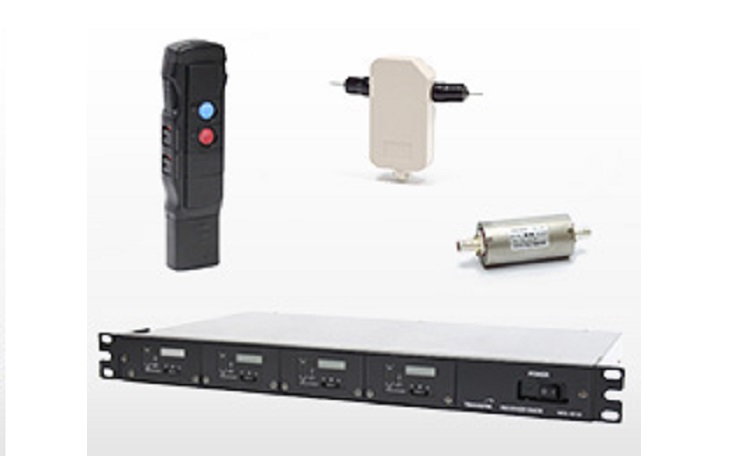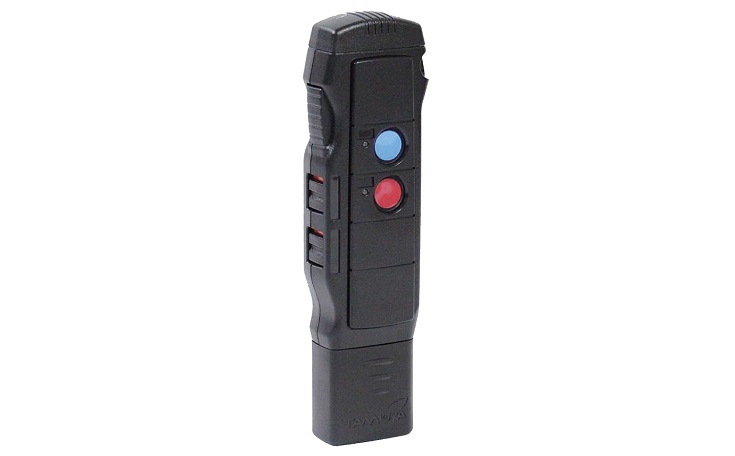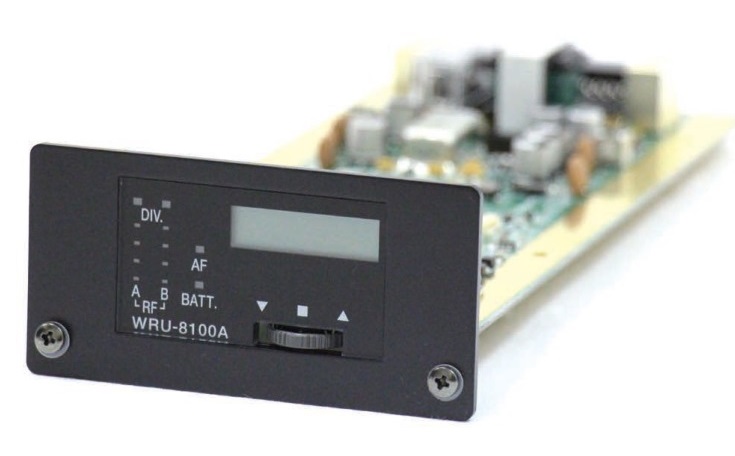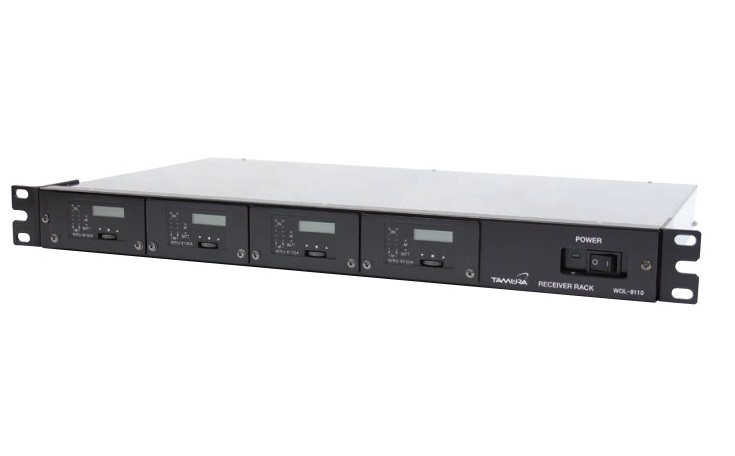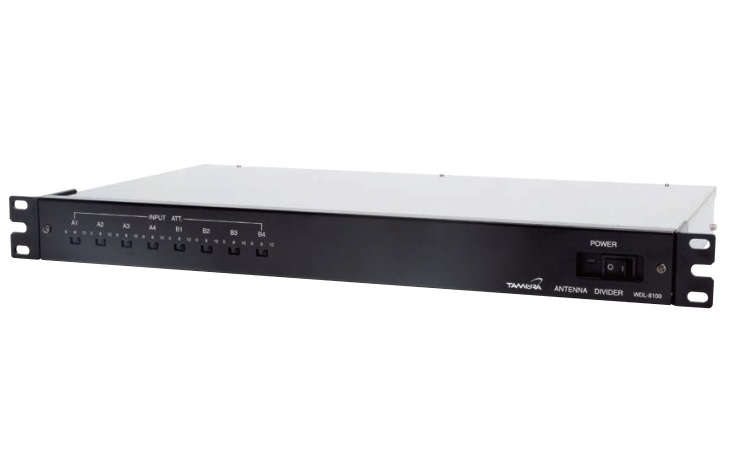Wireless microphone system for railways type B
Wireless microphone system for railways type B
Features
- Since using a digital modulation system, this type enables multi-channel (15-ch) operation, which cannot be achieved by analog modulation.
- It uses a down converter system from the antenna to the receiver.
- Cables for conventional C-type wireless systems can be reused as they are.
- It also has control switches that can be used for not only broadcast but remote control of facilities, supporting rail station operations.
- Since it is fully digital, it offers high confidentiality, making it possible to prevent improper use with microphones other than those that are assigned an ID.
Wireless microphone WTH-8120A
Features
- Low noise thanks to a synthesizer/compander system
- Capable of using up to 15 frequencies thanks to a digital modulation system
- Small, lightweight, easy-to-handle body
- Capable of not only broadcasting, but remote control of up to 2 targets, and switching between 4 frequencies
- Offering high confidentiality because of being fully digital, preventing improper use of microphones by means of ID assignment
Specifications
| Transmission frequency |
One frequency from 30 channels between 806.125 and 809.750 MHz |
| Types of radio wave |
G1D/G1E |
| Oscillation method |
Crystal-controlled PLL synthesizer system |
| Transmission output |
5 mW/1 mW (switching system) |
| Microphone unit |
Omnidirectional electret condenser microphone |
| Antenna |
Incorporated in the main body |
| Frequency characteristics |
100 Hz to 7 kHz |
| Number of targets controlled |
2 |
| Channel switching |
4 channels |
| Power supply |
AAA nickel metal hydride rechargeable battery 1.2 V × 2 750 mA |
| Operating time |
8 consecutive hours (during intermittent operation with transmission : wait = 1 : 4) |
| Environment |
-10 to +50°C (No condensation) *Note that the temperature characteristics of batteries are not included |
| Waterproof standard |
Compliant with the IPX4 rating |
| Mass Approx. |
177 g (WTH-8120A) *The mass of straps is not included |
Wireless receiver WRU-8100A
Features
- Allowing low-noise multi-channel operation, thanks to the use of the 800 MHz band and a synthesizer/digital system, and making it easy to change the frequency
- Space diversity reception system that causes few sound dropouts, reducing dead points
- Withstanding interference thanks to the combined use of a tone squelch and a carrier squelch, shutting out noise during wait for reception
- Displaying the antenna input system that is during reception, using the A and B indicators
Specifications
| Reception frequency |
One frequency from 30 channels between 318.200 and 321.825 MHz |
| Reception circuit system |
Diversity double super heterodyne system |
| Reception sensitivity |
20 dBμVEMF or less (bit error rate: 10-5) |
| S/N |
60dB or more (when press-to-talk microphone WTH-8100 series audio input level is -36 dBm) |
| Output level |
-20/0 dBm (switching system, press-to-talk microphone WTH-8100 series audio) |
| Input level |
(at -36 dBm) |
| Frequency characteristics |
100 Hz to 7 kHz (with a bass/treble adjustment function) |
| Remote output |
Output by a photocoupler (common) × 6 |
| Power supply |
DC12 V (Supplied by WOL-8110) |
| Environment |
-10 to +50°C (No condensation) |
| Mass Approx. |
135g |
Storage rack WOL-8110
Features
- Capable of storing up to 4 receivers
- Capable of being mounted on an EIA rack (1U) or JIS rack (1J)
Specifications
| Antenna input |
A system × 2, B system × 2 (BNC-J, 75Ω) |
| Output level |
-20/-50dBm |
| Power supply |
AC100V 50/60Hz |
| Environment |
-10 to +50°C (No condensation) |
| Mass Approx. |
4.0 kg (not including the receiver WRU-8120) |
Antenna divider WDL-8100
Features
- 8 antenna inputs and 4 branch outputs
- Eliminating internal loss resulting from mixing or distribution, thanks to a built-in booster amplifier, fully bringing out the performance of the receiver.
- Capable of being mounted on an EIA rack (1U) or JIS rack (1J)
Specifications
| Antenna input |
A system/B system × 4 (each) (BNC-J, 75Ω) |
| Antenna output |
A system/B system × 2 (each) (BNC-J, 75Ω) |
| Passband |
318.200 to 321.825 MHz |
| Gain |
+3.5 dB (0 dB during the use of WOL-8110) |
| Power supply |
AC100V 50/60Hz |
| Superimposed power supply |
DC +12 V (antenna input pin) |
| Environment |
-10 to +50°C (No condensation) |
| Mass Approx. |
4.2 kg
*Since a down convert system is used, an antenna divider is required on a system. |
Select from Other Product
